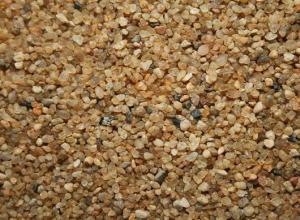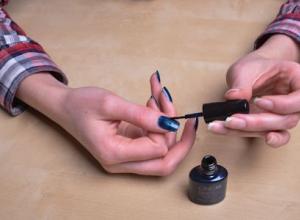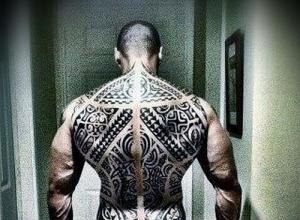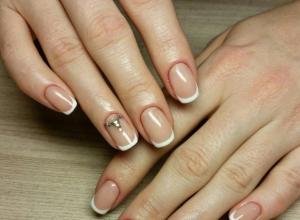How and where is diamond used in technology? Unexpected areas and traditional uses of diamonds What diamonds are called technical
The use of diamond began more than two centuries ago. Until the mid-20th century, they were used as a material for making jewelry. It is interesting that to cut one diamond, they take another diamond. The special strength of the material does not allow working on it with the help of crystalline formations of other minerals. Scientists, mineralogists, physicists and chemists have been studying the properties of the rock for a long time. They identified all the limiting characteristics and found the possibility of using stones in various production areas.
A sample of a valuable mineral is an allotropic change in carbon. Every person has the opportunity to become the owner of a piece of it. This is the graphite of an ordinary pencil. It transforms into graphite at a certain temperature increase. If you put a stone in the Mohs hardness table, it will take the top line, 10. Science has not yet identified a higher hardness and rocks stronger than diamond have not yet been found. Other features of the mineral:
- density – up to 3.4–3.5 g/cc;
- heat conductivity – up to 2.3 thousand W;
- friction index on a metal surface – 0.1;
- the top layer is a gas film in an adsorbed state;
- when removing the top layer (film), the friction coefficient increases to 0.5;
- low coefficient of ability to withstand compression;
- high modulus of structural elasticity.
The crystal can be melted if a pressure level of 11 GPa is reached, the melting index is 4 thousand degrees. The stone begins to burn at a temperature of 800 thousand degrees, the process takes place in air. The diamond burns, leaving no residue but producing carbon dioxide.
The flame when burning is blue. A different result is obtained when heating without access to air masses. Temperature - 2 thousand. The gem transforms into graphite, disintegrates, making sounds similar to cotton. Thermodynamics in this case is anomalous in nature.
Scientists have found the use of diamonds in modern industries and developing technologies.
Areas of application
There are many areas for using the properties of a material. You can list the main and most popular ones.
In this article:
Now there are a huge number of varieties of diamonds. Several classifications are given in the literature, based on a variety of principles. Some of these classifications are based on a combination of material properties - physical and chemical. They are classified according to the place of extraction, color, and quality of material. The variety of diamond may include such parameters as weight, presence of defects, density and uniformity of shades.
Diamond in the Rough
Diamond classification by weight
The weight of this mineral is measured in carats. In the SI system, a carat is 0.2 grams. The main characteristic is weight if the stone is small in size. Large stones are graded by hue, color purity and inclusions. There are 3 types, depending on their mass:
- stones whose weight does not exceed 0.29 carats are considered small;
- medium stones weigh from 0.3 to 0.99 carats;
- All minerals weighing more than 1 carat are considered large.
The price of stones is proportional to the square of their weight, but this is not the only parameter that has an impact.
Scope of application
Depending on the scope of application, mined diamonds are divided into two categories:
- technical variety of diamond;
- jewelry diamonds.
- The board consists of intergrowths of crystals, fragments and crystals of non-jewelry quality. They are usually too light in weight to be cut. This category also includes other low-quality crystals, for example, those with poor color, defects, cracks or numerous inclusions. A bead is an unnatural diamond that is crushed into fine pieces for use in jewelry and used as an abrasive powder.
- Ballas are spherical diamond spherulites with a dark hard shell that do not contain inclusions.
- Carbonado is practically the most famous diamond. The name means "carbonaceous" in Portuguese. This variety of diamond appears as black aggregates consisting of irregular grains or small octahedral crystals. They have a higher abrasion resistance coefficient than conventional industrial diamonds.
About 20% of mined diamonds are jewelry. Their number is higher in alluvial deposits. Such diamonds must meet certain criteria: they must be transparent, without large cracks or inclusions.
They are cut, during which approximately half of the mass is lost, but all the qualities of the mineral are revealed. The most commonly used cut for this purpose is called a diamond cut. But others can also be used, for example, stepped, cabochon, wedges and combinations thereof.

Diamond weighing 404 carats, mined in Angola
Separation by color
The color of this mineral is acquired due to impurities and inclusions, structural defects, and the influence of external factors, such as radiation. The color may be uneven and consist of several colors. There are also diamonds in which only the top layer has color. The most common are pale diamonds with tints.
Varieties of industrial diamonds, the majority of which (approximately 80% of all mined stones) have the following color options:
- milky white;
- gray;
- black.
Among the gem quality diamonds are:
- diamonds with yellowish color and tints;
- A smoky brown variety of diamond.
Rare colors of the mineral are:
- bluish;
- greenish;
- mauve.
It is very rare to find diamonds that have no color. Most of them have a subtle tint called tint. A transparent diamond without any shades is called a “pure water diamond.” There are several versions of the origin of this term. One of the most ridiculous is that the smugglers allegedly hid the stones in containers of water, in which they were not visible.
The whole absurdity of this version lies in the fact that in fact they are distinguishable in water. In order for this not to be the case, they must have a similar refractive index. The refractive index of water is 1, and that of diamonds is 2.5. Thus, it is not difficult to distinguish this stone in the water. Most likely, the term is used to denote the inherent transparency of water.
What are the most valuable shades of diamonds? In addition to transparent ones, diamonds that are painted in bright colors, which, as already mentioned, are called fancy, are also valuable. They are extremely rare. These include: golden and wine-yellow diamonds, as well as some other rarer colors, for example, red, cherry, blue, pink. The rarest types of diamonds are those with the following colors: purple, bright green and black, provided they are of the jewelry variety.
Diamond mining
Until the 19th century, diamonds were mined only by open-pit mining. However, after this, kimberlite pipes were discovered, and a new mining technology was needed. The diamond-bearing vein goes deep into the earth, and in connection with this, it was decided to develop underground mining methods.
There are several ways to mine ore.
Diamonds today are used not only in jewelry, but also in industry. The stone has properties that are successfully used in many industries. The characteristics of the material cannot be replaced, therefore, when you find out what is made from diamonds, you should not be surprised if this list includes not only jewelry.
Material properties
Diamond by its nature is an allotropic modification of carbon. Carbon can also be found in other substances such as graphite or coal, but it is diamond that has become famous for its properties. The material has the highest hardness of any element, 10 out of 10 on the Mohs scale. True, this does not confirm its strength; the material is very fragile if subjected to sudden impacts, such as impacts.
Diamond in the Rough
Diamond density is 3.4–3.5 g/cm3. And the thermal conductivity is high and amounts to 2300 W. The stone does not heat up in your hands. Another important characteristic in industry is a low compression ratio and a high elastic modulus. Diamond melting occurs at a temperature of 2000 degrees Celsius without access to oxygen, and if the stone is melted in air, the process will begin at 800–1000 degrees.
The diamond burns and completely turns into carbon dioxide. If the process occurs without oxygen, it turns into graphite. Reverse transformation is much more difficult.
Use of diamonds
The use of diamonds is in demand in the following areas:
- jewelry industry;
- manufacturing industry;
- mining industry;
- electrical engineering;
- nanotechnology.
The jewelry industry uses only a third of the diamonds mined, which have an attractive appearance. The stone must have a minimum number of microcracks, defects, and inclusions in the structure. The mineral must be transparent. Clouds are sometimes observed as inclusions, or the mineral acquires a yellowish-gray tint due to impurities in the soil. It is by these criteria of appearance, as well as taking into account the size of the stone, that the value of a diamond is estimated.
Treated diamonds are called polished diamonds. After being assessed by a gemologist, the stone is put up for auction, where it is purchased either by a jeweler or a businessman or entrepreneur. Sometimes auctions are closed to buyers, and jewelry companies purchase the minerals. Over time, the mineral can be set in gold, platinum or silver. Any precious metal will look luxurious when combined with a diamond.

Jewelry with cut diamonds - brilliants
Diamonds are used to decorate earrings, rings, pendants, brooches, and bracelets. As a rule, such products are purchased by girls, since the diamond suits their energy. The stone is durable and does not require special care.
Those diamonds that are not cut and framed into precious metal, that is, technical stones, are sent for the production of industrial tools. The demand for industrial diamonds is high, so deposits are being developed, and technologies for the synthesis of artificial minerals are being improved. In these ways it is possible to cover the needs of industry.
The manufacturing industry uses mainly the hardness of the element. Various types of work such as drilling or cutting are carried out quickly and without the formation of microcracks on the surface of the material. Diamonds are used to turn metal. Drills that drill oil wells are also coated with mineral chips.
It has high wear resistance, which allows you to coat any tools with diamond chips. This extends their lifespan and increases productivity. For example, in Russia alone there are more than 1,200 tools coated with diamond chips:
- drill;
- cutters;
- glass cutters;
- scissors for metal and stone;
- grinding tools.

Diamond coating on a drill
Advantages of using diamonds in construction:
- precision of work, filigree;
- speed;
- low process noise.
There are several types of diamond cutting: using borax or dry diamond cutting. Of course, tools coated with diamond chips are more expensive than conventional ones, but their cost is compensated by the quality of the process. For example, the cost of cutting concrete with diamonds is completely justified. And when using special equipment, the employee does not require much physical effort.
Drilling wells with diamonds is relevant, especially if the diameter should be small. Now there is an industry in construction called diamond cutting. When drilling, for example, concrete, there is no vibration or dust. Diamond drilling will make holes for the following communications:
- water supply, air conditioning, waste and sewerage pipelines;
- Internet and other data transmission channels;
- taking concrete samples on monolithic rock structures.
But diamond cutting is also relevant, since it leaves behind a perfect cut, without chips or cracks in the material. Diamond coated discs can withstand high temperatures and pressure changes.
Diamonds are used in the space industry to coat devices and improve their strength. And on the ground, stone is used when carrying out work, for example, building tunnels in explosive zones.
The use of diamond coatings is also encouraged in medicine, especially in surgical instruments. Such as medical scalpels, dental equipment, scissors and clamps. The development of a medical laser is underway, the crystals of which will have a diamond coating, and the mineral acts as a conductor.
The use of diamond is also justified in telecommunications and electronics. Stones are used to transmit signals through cables. Of course, such technologies require material investments, but the corresponding cables can withstand temperature changes. Diamonds are also not afraid of power surges. The mineral is used together with ruby and in the manufacture of supersensitive elements.
Diamond is used in optics for astronomers. Experiments in the fields of physics and chemistry require the use of diamonds for the invention of new optics, improvement of laser technologies, and space exploration. The stones act as a protective element that cannot be damaged by hydrofluoric acid.
In production, in addition to natural rock, stones mined in the laboratory are used. Jewelry specimens are mined in kimberlite and lamproite pipes, separately from industrial diamond. And the amount of synthetic stones in industry reaches 97%. There are three synthesis technologies today:
- CVD - chemical vapor deposition, or chemical vapor deposition.
- HPHT - high pressure high temperature, a method involving high temperatures and pressure. A technology that uses a diamond seed, as well as graphite, and creates conditions in a special space for the formation of new covalent bonds.
- Synthesis with detonation, simulating conditions closest to natural (explosives containing carbon).
All these technologies are too expensive, but there is no alternative in diamond mining yet. Therefore, scientists continue to work towards artificial synthesis. The use of minerals in industry does not stop; nanotechnologies have recently been developed, so the cost of raw materials does not fall. Stones in jewelry are also relevant and in demand in the jewelry market.
The gemstone has been used by people for more than two hundred years. Its use is far from limited to the creation of fine jewelry that is intended solely for beauty. The use of diamond at the present stage is developed in the field of medicine, industry and other branches of human activity, where it brings enormous benefits.
Useful properties of diamonds
Since the technical characteristics and properties of these stones are unique, it is not surprising that the use of diamonds is becoming wider. Diamond is a modification of the chemical element carbon and is the hardest substance in the world . According to the generally accepted Mohs scale in gemology, it has the highest rating of ten points. However, we should not forget about the increased fragility of diamonds. Any product made from them should not be abruptly dropped or handled carelessly.
Due to its high thermal conductivity, diamond heats up slowly . In addition, it has such valuable properties as high elasticity And low compression percentage . It melts at 2000°C under a pressure of 11 GPa, and burns at a temperature of about 800°C. When burned, the carbon that makes up diamond becomes carbon dioxide, and if burning occurs in an oxygen-free environment, the substance becomes graphite. As for the possibility of the reverse process, everything is much more complicated here and is hardly used in practice.

The use of diamonds in jewelry
No matter how strange it may sound to ordinary people, not all mined stones are used in jewelry. If a high-quality and beautiful decoration is made from it, it must be of very high quality: preferably with a minimum of microcracks and foreign inclusions. The mineral that is used to make jewelry must be transparent, with a minimum amount of grayish tints.

How are diamonds cut to produce brilliants and with what? They are polished and polished only with the same diamonds. This simple technique was discovered in India when one of the jewelers, having rubbed one diamond against another, discovered that both began to sparkle and glow brightly. An interesting fact is that the method of polishing diamonds was kept secret for a very long time. Ludwig Berkem became the first European who, independently of the Indians, began to process stones in the same way.

Diamond sawing is a technique that appeared much later than polishing and cutting. At first, pieces of steel wire were used for sawing, but this took a very long time. Modern methods of sawing diamonds using bronze cutters significantly speed up and facilitate the process. This cutter contains a special emulsion with diamond dust.
Diamonds that have been processed are called brilliants. Subsequently, they are assessed by gemologists, and the stones are sent to auctions.
Application of diamonds in production
Not all stones are used in production. Those diamonds that are mined in natural deposits are very expensive, so their use in large industrial quantities is impossible and does not justify itself.

At the present stage, artificial diamond is produced by three methods:
- from steam, by chemical deposition;
- under high pressure and temperature;
- subversive synthesis with imitation of natural conditions (an explosive containing carbon is detonated).
What are diamonds made of? All the properties that a diamond stone has are equally good when used, but for the industrial sector the decisive factor is the hardness of the stone. When cutting or drilling using diamond chips, the material is cut very carefully and microcracks do not form in it. Any tool coated with diamond chips has greater productivity and excellent cutting quality.
In Russia, over the entire period during which diamond was used in the industrial sector, about 1,500 types of tools with such a coating were made. These include scissors for cutting metal, glass cutters, and grinding tools. They are distinguished by high cutting accuracy, and the speed of work when using them is much higher.

Of course, such a tool is quite expensive, and the question may arise as to why you need to buy it if you can use cheaper analogues. However, practice shows that, for example, such a labor-intensive process as cutting concrete without a diamond-coated tool can take a long time, while special equipment greatly facilitates the entire process.
When drilling oil wells, diamond drills (or drills) are widely used, especially if it is necessary to drill a hole of small diameter. Diamond drilling is indispensable in the construction of water supply and sewerage systems.

Due to the fact that artificial diamonds are now widely grown and used, their use is available in any field: from heavy industry to medicine and space. In the space sector, diamond coating is used to increase the strength of aircraft. Surgical scalpels are special instruments that require increased precision and high quality work, just like dental equipment. Therefore, diamond coating has long become indispensable for them.
Diamonds are used as protective elements in the fields of chemistry and physics - primarily because acid can dissolve any other substance, but the diamond remains intact when placed in it. This may seem surprising, but diamonds are used to transmit electrical signals through cables in the field of telecommunications and electronics. Cables containing diamonds are very resistant to environmental influences and have high wear resistance.
Diamonds are also widely used in astronomical optics - as a protective agent for optical instruments.
The scope of industrial use of diamonds is very wide and, thanks to the amazing and useful properties of this stone, one can understand that it has long been used not only to create jewelry, but also brings benefits to people everywhere in various areas of their activities.
The use of diamond has a history of more than two centuries. Almost until the middle of the 20th century, diamonds were exclusively a jewelry material. But in order to give it one or another facet (to cut a diamond), you need to use another diamond, since no other material can process this durable mineral. To unlock the full potential of the mineral, chemists and physicists conducted a series of experiments and found out its properties, as well as the limiting parameters that contribute to the use of diamond in various fields of activity.
Properties of diamond
Any diamond is an allotropic modification of carbon, which, by the way, is also present in the graphite of a simple pencil. Therefore, at elevated temperatures, any diamond easily turns into graphite. On the Mohs hardness scale, the mineral has 10 points out of 10 possible. Its density is 3.4 – 3.5 g/cm³. Its thermal conductivity is extremely high and amounts to up to 2300 W (mK).
The mineral has a very low coefficient of friction for metal (about 0.1), which is due to the presence of a thin film of adsorbed gas on its surface. In its absence, the friction coefficient increases 5 times. The two most important characteristics are the lowest compression ratio and the highest elastic modulus.
 Diamond melts at a pressure of 11 GPa and a temperature of 4000° C. In air it burns at a temperature of 800 to 1000° C, and with the participation of pure oxygen it burns, like pure propane, with a blue flame and burns completely, being released in the form of carbon dioxide.
Diamond melts at a pressure of 11 GPa and a temperature of 4000° C. In air it burns at a temperature of 800 to 1000° C, and with the participation of pure oxygen it burns, like pure propane, with a blue flame and burns completely, being released in the form of carbon dioxide.
If you heat the mineral without access to air at a temperature of 2000° C, it quickly turns into graphite and breaks into pieces with cotton. It is noteworthy that at temperatures above 2000° C the thermodynamics of the mineral takes on an anomalous character.
Due to its “extreme” properties, diamond is used in modern manufacturing and processing industries.
Application of diamond
In construction, the use of diamonds is justified by the specifics of complex structures made of concrete and steel. Diamond drilling, cutting, dismantling, regardless of the material of work, allows you to achieve results without the formation of destructive microcracks. Drills and saws of huge diameters are used for sawing concrete, grinding crushed stone, and even cutting granite and marble.
The mineral is used in precision instrument making and heavy engineering. Turning metal is also the prerogative of diamond.
Extremely high wear resistance, coupled with unlimited access to artificial and industrial diamonds, makes it possible to design and build literally everything (from precision surgical instruments to space carriers).

Figure 1. Applications of diamonds.
For example, in Russia alone today more than 1,200 types of tools are produced that use diamond (Fig. 1, areas of application of diamonds). Drills, cutters, grinding wheels, glass cutters, metal scissors and saws for metal and stone - diamonds are actively used everywhere (mainly industrial, that is, synthetic).
Without this mineral, laying cables and building tunnels is impossible. Where blasting cannot be carried out, a roadheader is used, armed with a huge disk strewn with blades with a thin coating of diamond chips.
Diamond is also used in medicine, where the thickness of the scalpel blade is critical. By reducing the width of the incision and remaining sharp for a long time, the diamond scalpel is the main tool of the modern surgeon. Promising developments such as a medical crystal laser, where the mineral will act as an active conductor, deserve special mention.
In telecommunications and electronics, diamond is used to carry signals of different frequencies through a single cable. Of course, its dimensions are extremely small, but its properties successfully overcome large temperature changes and the largest voltage surges. Its use along with ruby in ultra-sensitive photocells, optics, which is at the service of astronomers, is especially critical.
In chemistry and physics, diamond is used primarily as a protective element. An aggressive chemical environment that can damage glass (hydrofluoric acid), as well as scientific experiments in the fields of quantum physics, optics, laser technology, and space exploration, in which errors are unacceptable, require the active use of diamonds.
The use of this mineral is very active in mining. Coal face, oil and gas production - wherever there is a need to drill, lay pipes and deal with very hard formations in the soil (rock formation, limestone), hardened steel alone is not enough.
What kind of diamonds are used in production?
Not every diamond is suitable for use in production. Jewelry stones cost incredible amounts of money and are mined in several places all over the planet, which is completely unprofitable and unjustified in mass industry. This is where synthetic elements come to the rescue. Since 1953, more than 97% of all diamonds used in the industry have been grown artificially. Currently, there are 3 known methods for obtaining this mineral:
- CVD – chemical vapor deposition, or chemical vapor deposition.
- HPHT – high pressure high temperature, or with the participation of high temperatures and pressure.
- Synthesis with detonation, simulating conditions closest to natural (explosives containing carbon are detonated).
Thus, the global industry fully covers its needs for diamonds and tirelessly pleases humanity with new technological achievements.
Latest site materials
Cooking

Conversation on the topic: "International Day of Older Persons" lesson plan (preparatory group) on the topic
MCOU "Dzhavankent Secondary School" Plan - summary of an open class hour in the 6th grade on the topic: "Day of the Elderly" in the village of Dzhavankent 2017. Goals: To cultivate in students feelings of respect, attention, compassion, responsiveness, sensitivity to the elderly
Horoscope

What is an ornamental stone? Ornamental mineral formations
If you look around carefully, almost all the objects that surround us are made of stones and minerals. Or these components are part of the components from which this or that material is made. The house is built of concrete, which is
Experience

Difference between gel polish and shellac
Currently, manicure materials such as gel polish and shellac are very popular in the nail industry. They really simplify the task for the master and in the end the result pleases the client’s eye. Gel polishes from each manufacturer have a wide range of colors
Cosmetology

Plague doctor tattoo The meaning of tattoos for girls
The meaning of the Plague Doctor tattoo - photo examples of ready-made tattoo designs Interesting, meaning and meaning of the “Plague Doctor” tattoo Today, more and more often you can find tattoos with a mystical meaning on the bodies of young people and girls, which is what they represent
Cooking

Beautiful and fashionable French manicure – the best photo ideas for French manicure
Fashion trends, new products, trends - every season they come up with something interesting. It is not always possible to keep up with innovations, and this is not necessary. The established classic remains in fashion. In manicure it is a white French manicure. It's difficult to find something more perfect. Neat
Horoscope

Documents for registration and receipt of monthly child benefits
Being a single mother is a titanic task. A woman carries a baby alone, gives birth, and then raises it. Unfortunately, she has no one to expect moral support from, but she can receive financial assistance from the state. How much do single mothers earn?